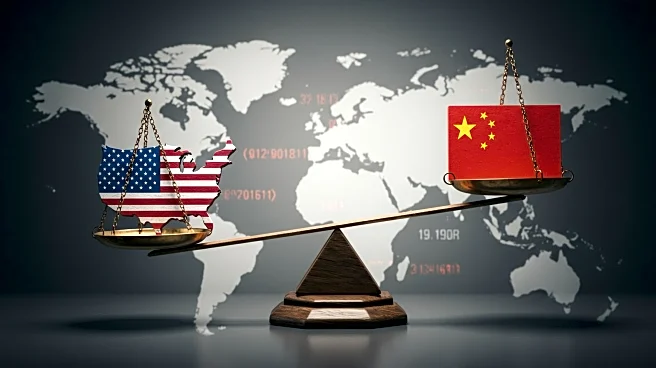Rapid Read • 8 min read
The United States has significantly increased tariffs on imports from China, leading to a shift in manufacturing and supply chain diversification to South and Southeast Asia. This region has become a focal point for trade tensions, with countries facing some of the highest tariffs globally. Despite some regional leaders welcoming the tariffs as lower than initially threatened, analysts warn that these tariffs remain historically high. The tariffs include additional duties on 'transit shipments,' which are goods that pass through a country with lower tariffs before reaching the U.S. This has created challenges for regional economies that rely on exports, as well as for American consumers and companies.
AD
The imposition of high tariffs by the U.S. on Chinese imports has significant implications for global trade dynamics. South and Southeast Asian countries, which have become alternative manufacturing hubs, face economic challenges due to these tariffs. The tariffs could potentially disrupt supply chains and increase costs for American consumers. Additionally, the tariffs may lead to a reevaluation of production strategies by companies seeking to avoid high tariffs, potentially affecting the economic growth of these Asian countries. The situation underscores the complex interplay between trade policies and global economic shifts.
The continuation of high tariffs may lead to further negotiations between the U.S. and affected countries in South and Southeast Asia. These countries may seek to negotiate tariff reductions to mitigate economic impacts. Additionally, companies may explore alternative supply chain strategies to circumvent high tariffs, potentially leading to shifts in global manufacturing patterns. The situation may also prompt diplomatic engagements between the U.S. and China, as well as with other affected countries, to address trade tensions and seek mutually beneficial solutions.
The tariffs highlight broader geopolitical tensions between the U.S. and China, with implications for regional stability and economic partnerships. The situation also raises questions about the effectiveness of protectionist trade policies and their impact on global economic integration. The tariffs may prompt discussions on the need for more equitable trade agreements that consider the economic realities of developing countries.
AD
More Stories You Might Enjoy











